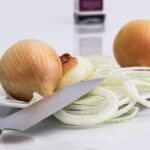Coconut oil is used to treat various kinds of yeast imbalances in adults, children, and babies. It puts the overgrowth of yeast back in check.
After battling with diaper rash in your infant you’ll understand why it’s important to have a bit of coconut oil on hand to treat their diaper rash.
While there are many thing’s that parents have tried to treat diaper rash on their babies – let’s go over one of the best ways to eliminate diaper rash or yeast overgrowth.
After this article, coconut oil will be another great tool in your parenting toolbox; it’s chemical-free, organic, and one of the greatest healing oils that has long been used by many cultures around the globe.
What Is A Yeast Diaper Rash
Your skin is covered in microbes, these are perfectly functioning when they are in balance. You have a skin flora that is filled with yeast, probiotics, and various other microorganisms.
In fact, there are roughly 1,000 species of bacteria living on the human skin. This is what makes it thrive.
If these microorganisms become imbalanced undesirable skin conditions form a.k.a. the yeast infection, most commonly seen on babies bums, but not limited to our smaller friends.
Where Does Yeast Thrive On The Human Body
Adults can get yeast infections too – yeast thrives in sweaty places, inside the intestines, and even in our mouths.
Certain things will cause yeast to rapidly grow into a state of infection, for instance, tight-fitting clothing that traps moisture on the skin, or using antibiotics.
What To Look For When You Think Your Baby Might Have A Yeast Diaper Rash
Yeast diaper rash occurs when a bacteria called candida overgrows to the extent of causing a rash on the bottom. The most common characteristics of a yeast diaper rash include:
View in gallery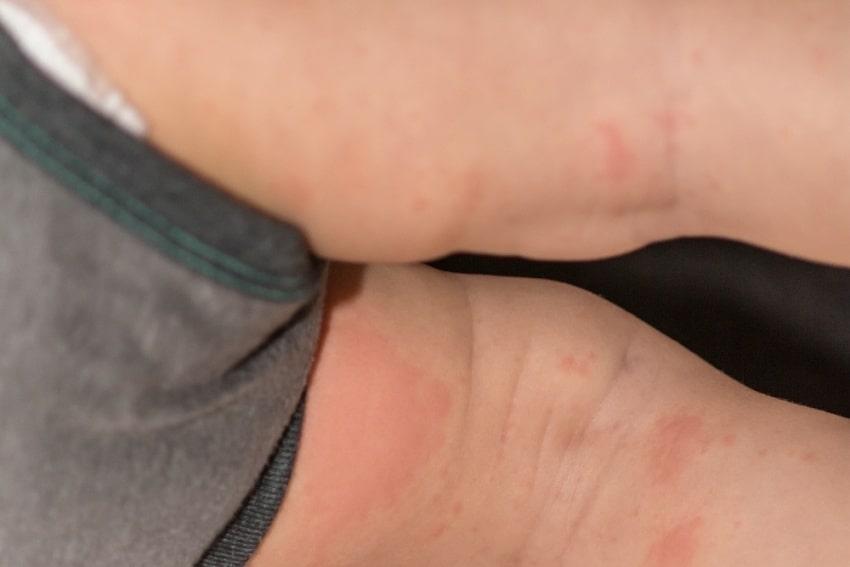
Dark Red Rash
Your baby’s bottom might have a slightly raised rash, dark red in color. If you open your infant’s diaper and spot a rash that’s dark red, puffy looking, and has a distinct border this is likely caused by a yeast diaper rash.
Blisters and Sores
Sometimes blisters, sores, or ulcers become prominent when a baby has a yeast diaper rash. There could be just one sore or multiple in the affected area.
These pus-filled sacs are the body’s way of releasing white blood cells that are currently fighting off the yeast diaper rash.
Scaly skin
Scaly or peeling skin is a form of a more severe diaper rash. if you notice that your baby’s skin is peeling off with the diaper rash it means the diaper rash has gotten worse and might be more difficult to treat.
Spend as much time as possible exposing the area to the fresh open air as possible, keep the area clean to avoid infections, and keep up on treatment remedies.
Pimples outside the region
Sometimes the area that is not red and inflamed, the outside region will have noticeable pimples or tiny red bumps. Some will be filled with pus and some just red and raised.
If you are noticing any of these symptoms on your baby’s bottom, it’s best to start treatment as soon as possible to get ahead of the infection. Don’t wait to begin treatment because diaper rash can cause evolve quite rapidly.
Is Coconut Oil An Effective Way To Treat Diaper Rash
Yes, coconut oil will help with treating a yeast diaper rash if it’s caught early on. If there are blisters or pus sores, you might need to get additional treatments.
At the first sign of a yeast diaper rash, clean the area, apply a layer of coconut oil, and then allow it to air dry.
Repeat these steps a few times throughout the day to eliminate diaper rash. Coconut oil is naturally antimicrobial, antibacterial, and antifungal.
This helps to eliminate the harmful bacteria that cause a yeast diaper rash and improve the helpful skin bacteria to fight off the yeast infection naturally.
Buy a reputable version of coconut oil
Coconut oil has long been used for skin, hair, and nail treatments. Be sure to buy an organic unrefined version for the best quality. Some low-grade coconut oils have additives, chemicals, or is processed in a way that hinders the natural healing properties.
[amalinkspro type=”showcase” asin=”B014BSY19M” apilink=”https://www.amazon.com/dp/B014BSY19M?tag=mominformedcom-20&linkCode=osi&th=1&psc=1″ new-window=”true” addtocart=”false” nofollow=”true” sc-id=”4″ imgs=”LargeImage” link-imgs=”false” specs=”Coconut Oil for Baby Hair – CRADLE CAP!! The Best Cradle Cap Treatment Ever!! Baby cradle cap, Infant cradle cap, adult cradle cap, stinky and stingy cradle cap, all cradle cap!!~~~Coconut Oil for Baby Hair & Skin (Cold Pressed & Virgin), Grape Seed Oil, Sunflower Oil – 100% Organic and Natural Hair & Skin Care~~~Coconut Oil for Baby Hair and Skin – Everyday Moisturizer for Babies and Adults. Helps protect skin naturally!” btn-color=”#ff9900″ btn-text=”Buy on Amazon” alignment=”aligncenter” hide-prime=”0″ hide-image=”0″ hide-price=”0″ hide-button=”0″ width=”750″]Coconut Baby Oil Organic Moisturizer[/amalinkspro]
Make sure that the product you choose doesn’t have any fragrance added to it – this can cause further irritation to your baby’s delicate skin.
Add essential oils that help fight off yeast diaper rash if your baby is old enough
Once your baby becomes old enough(around 6 months of age) you can add in essential oils to help treat a yeast diaper rash. This is an extra boost for those more advanced rashes.
Essential oils like; tea tree oil, eucalyptus, and lavender all fight off harmful bacteria. In turn, this will help cure a yeast diaper rash. Plus, it makes your baby smell even better!
If you decide to add essential oils to your infant’s diaper rash cream, add them one at a time to a small area of their skin first, to make sure there is no allergic reaction.
The test should be done on an arm or other area of the body that doesn’t currently have a rash. Place a small dot of the coconut oil and essential oil mixture on the skin to see how your child reacts.
How Long Should I Use Coconut Oil On My Baby’s Skin?
You can use coconut oil on your baby’s skin as long as you’d like to – a yeast diaper rash will generally clear up in three days after the start of using it.
After the diaper rash clears up you can continue using coconut oil as a preventative measure toward diaper rash.
After bathing your baby, apply a small amount of coconut oil on their entire body. Two days of oiling and then a bath on the third day is a good system to implement.
Oil, oil, wash, etc. This will help keep the skin flora in check and yeast at bay.
View in gallery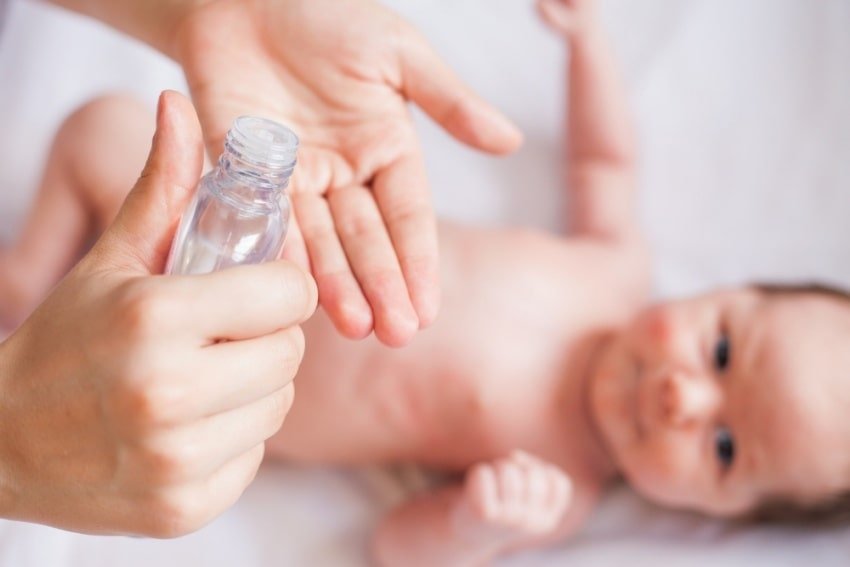
How To Use Coconut Oil For Diaper Rash
To treat a yeast diaper rash:
- Give your baby a bath gently cleansing the affected area
- Dab a small amount of coconut oil in the palm of your hand to warm it up
- Apply the oil to your babies bottom and any area that has diaper rash
- Allow the bottom to air dry for as long as possible for the best results
- Put a clean diaper back on your baby
- Change their diaper as soon as it’s soiled
- Apply coconut oil as often as it is needed
How Soon After The First Application Can You Expect to See Results?
After just a few times of putting it on you should be able to notice improvements in the overall severity of the rash.
Remember to take the additional steps to improve the rash overall. To treat a yeast diaper rash with coconut oil, you should apply all the remedies mentioned in this article for the best results.
If you notice the diaper rash on your baby getting worse rather than better after a week of coconut oil treatments – you should seek additional treatment or see a pediatrician if it is looking more severe.
When To Treat Diaper Rash Before It Gets Out of Control
The truth is that the longer you wait to begin coconut oil treatments for your baby, the more time they have to spend being uncomfortable. Don’t wait until you notice that your baby is hurting or has a pus-filled rash to begin treatments.
You can begin preventative treatments at any time, then if you start to see red bumps or raised skin forming you can intensify the treatments. Coconut oil has no limit, the more you apply it the healthier the skin will be in general.
If you don’t include coconut oil applications in your baby’s wash-hydrate regimen on a regular basis, then you can begin a coconut oil treatment at the first obvious signs of a physical rash or if your baby seems uncomfortable during a diaper change.
It’s best to start treatments as soon as you see a rash forming. And then continue for a few days after the rash has completely resolved.
If The Diaper Rash Becomes Severe, You Should Seek Additional Help
If you see the rash has signs of infection or is oozing green or yellow pus then it’s a good time to see your baby’s pediatrician. Keep an eye out for your baby expressing signs of extreme pain.
Additionally, if your baby spikes a fever, expels blood from the rash, has itching, or forms a boil it’s a good time to schedule a visit with a pediatrician. It might be too far at this point to bring around with coconut oil alone.
Antibiotics are sometimes prescribed for severe yeast diaper rashes. Zinc treatment is another way that pediatricians treat severe rashes in babies.
View in gallery
Other Ways To Treat Diaper Rash
If you don’t feel that coconut oil is a method you’d wish to use for the rest of your child’s diaper years. There are plenty of other options to choose from to treat your baby’s diaper rash.
Below is a list of medicines you can purchase over the counter for a yeast diaper rash. Things to implement or avoid if you’re treating diaper rashes at home:
Stay Away From Irritants
When your baby has a yeast diaper rash, make sure to use water on a soft cloth with just a little bit of warm water to wash your baby’s bum, instead of using baby wipes.
Wipes contain preservatives, chemical additives, and other ingredients that keep them mold-free. These chemicals can be harsh on your baby’s skin, further contributing to their diaper rash.
Using some warm water, or running them through a warm bath each time they need to be cleaned can help eliminate diaper rash faster.
Change Your Babies Diaper As Soon As It’s Soiled
Newborns practically soil their diapers the moment you put them on, you can set a reminder to check your baby’s diaper every couple hours. Or, if you notice that your baby’s diaper is soiled sooner than that; change their diaper right when you realize it’s wet.
Diapers are often equipped with a yellow line that turns blue once the diaper is wet or poopy. Invest in these diapers if necessary as a reminder for you, we understand life gets busy so just do your best to implement this.
Apply A Thick Layer Of Cream Or Oil To The Skin After Each Diaper Change
Petroleum jelly, diaper rash ointment, or another slave that contains zinc oxide can be applied after the skin is dried.
[amalinkspro type=”showcase” asin=”B07MD6HJT4″ apilink=”https://www.amazon.com/dp/B07MD6HJT4?tag=mominformedcom-20&linkCode=osi&th=1&psc=1″ new-window=”true” addtocart=”false” nofollow=”true” sc-id=”4″ imgs=”LargeImage” link-imgs=”false” specs=”” btn-color=”#ff9900″ btn-text=”Buy on Amazon” alignment=”aligncenter” hide-prime=”0″ hide-image=”0″ hide-price=”0″ hide-button=”0″ width=”750″]Vaseline Pure Petroleum Jelly, Original 16.23 Oz[/amalinkspro]
This will help keep a barrier every time your baby goes to the bathroom, repelling any moisture away from the skin to be absorbed by the diaper itself.
Air Your Baby Out More Than Usual
Your baby will enjoy nothing more than laying out bare-skinned on a towel or burp cloth. Just watch their face when they get diaper-free time, you might even see your newborn flash a smile when you do this for them.
You can wrap a burp cloth around their genitals to direct the pee toward a cloth if they’re a boy. And to keep the wind off the area so they don’t get too cold while laying out.
Cleanliness Is Key To Resolving A Yeast Diaper Rash
Babies are super sensitive to bacteria present in the real world, especially small babies who are new to this world. They can get little infections in their eyes, mouth, or on their bums quite easily.
Every person that plans to touch your baby needs to wash their hands thoroughly before touching your baby.
Make sure that the area under your baby’s diaper is kept clean as well. You can ensure this through a bath, or wetting a cloth to wipe the area after each diaper change. Taking these measures will prevent infection from spreading to your baby.
View in gallery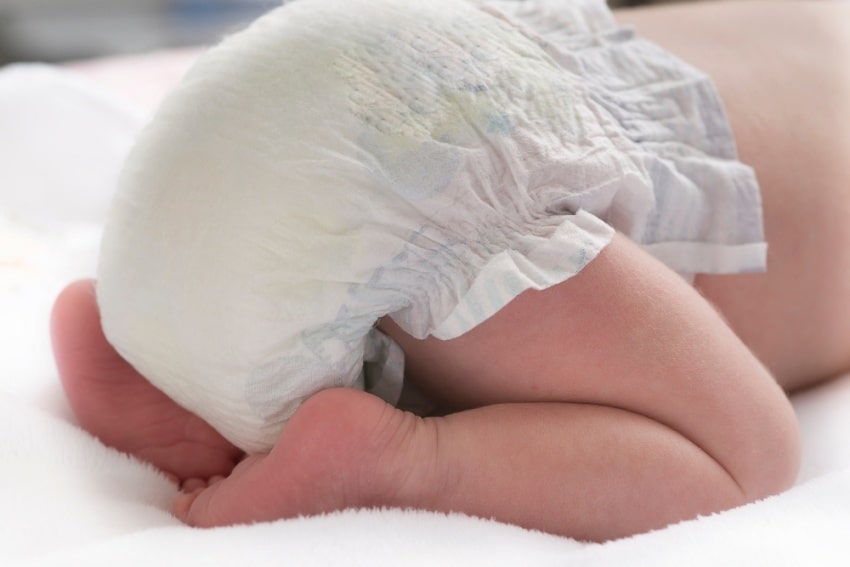
Moisture is not your friend when it comes to a diaper rash
You can pat your baby dry, or allow their skin to air dry after every diaper change. Sometimes wipes will put moisture on your baby, even if it isn’t much. Small amounts of moisture can and will contribute to diaper rash.
Allow the skin room to breathe
Opt for the next size of diapers until their rash has subsided. Airflow to the area is crucial for getting a yeast rash to subside in a timely manner.
Bigger diapers, loose clothing, and strapping the diaper loosely will all keep airflow moving around the rash, allowing it to heal even with a diaper on.
Antifungals creams and salves
Choose an over the counter anti-fungal cream to use in addition to the other remedies. Mycostatin and Lotrimin are effective antifungal creams you can purchase over the counter at a local grocery store.
[amalinkspro type=”showcase” asin=”B0021ACTIS” apilink=”https://www.amazon.com/dp/B0021ACTIS?tag=mominformedcom-20&linkCode=osi&th=1&psc=1″ new-window=”true” addtocart=”false” nofollow=”true” sc-id=”4″ imgs=”LargeImage” link-imgs=”false” specs=”Provides soothing itchy skin relief: Treat itchy ringworm on the body with Lotrimin AF cream fungus treatment~~~Proven to cure most ringworm: Lotrimin AF ringworm cream clotrimazole cream is clinically proven to cure the fungus infection tinea corporis, commonly known as ringworm~~~Safe for kids over 2: Help relieve your little girl or boy of the red, itchy ringworm rash on his or her body~~~” btn-color=”#ff9900″ btn-text=”Buy on Amazon” alignment=”aligncenter” hide-prime=”0″ hide-image=”0″ hide-price=”0″ hide-button=”0″ width=”750″]Lotrimin Antifungal Ringworm Cream, 0.42 Ounce (Pack of 1)[/amalinkspro]
Apply a thin layer of these creams to the area prior to putting on the protective ointment barrier. Do this up to three times a day for the best results.
Zinc Oxide for Diaper Rash
Zinc oxide is one of the most well-known ways to combat a yeast diaper rash. It’s an inorganic compound that’s widely used in the cosmetic industry across the board. Another interesting name for it is the philosopher’s wool.
How to Use Zinc Oxide
Apply it to how the label says to, your baby’s pediatrician should also give instructions on how to apply it.
Of course, you’ll want to clean and dry the area beforehand, in order to not trap any undesirable bacteria against the skin. Be sure to ask any questions you might have when you pick up your cream at the pharmacy.
Usually, you will need to use the cream for 1 week at a time, along with regular diaper changes to combat a yeast-diaper rash. If you have been prescribed a spray version of the cream, there is no need to touch the area at all, it will soak into the skin as needed.
Remember that this is not a preventative measure, unlike coconut oil treatments. This is something to use when your baby already has a severe yeast infection. Store your bottle of Zinc Oxide in a cool dry place, out of reach of young children.
View in gallery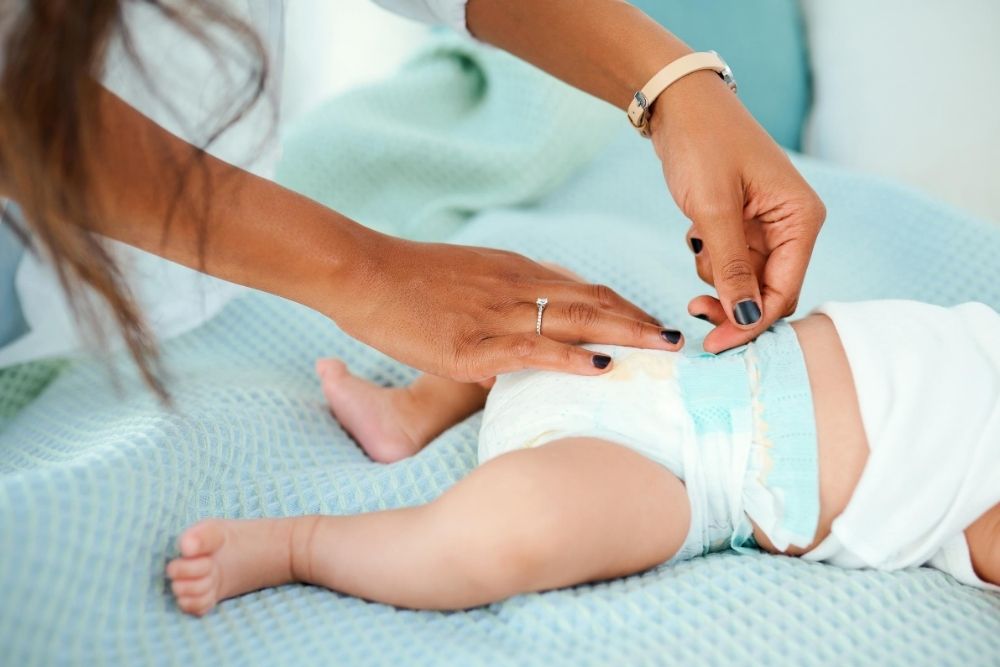
In Conclusion
A yeast diaper rash is often uncomfortable for your little one, making it hard for them to play and move around the way they naturally would. Keeping yeast infections at bay is important for them to be happy.
Aside from the way your child feels, a yeast diaper rash subjects a small baby to infection. Diaper rash, if left untreated can cause boils, open sores, and peeling skin on the tender skin of a baby’s bottom.
Coconut oil is a great way to keep diaper rashes at bay, or used to effectively treat already existing rashes. If applied correctly, and along with other treatments you should see the results you’re hoping for.
If you don’t see the rash getting better or moving in the right direction after a few days, you should seek additional treatments. Additionally, if you’re using cloth diapers, which can cause diaper rash to develop or worsen fairly quickly.
It’s best to switch to a chemical-free disposable diaper while a yeast diaper rash is active. Cloth diapers are amazing and I loved using them on my own babies.
But due to the fact that they become moist after the first soil, they should be avoided when there is a rash present.
If you choose to switch to disposable diapers during this time, you can do a deep clean on your cloth diapers to remove any bacteria from the yeast infection remaining on the diaper’s cloth.
After the deep clean, opt for a sun-bleach to dry them thoroughly and kill any remaining bacteria or yeast.
Medical Disclaimer. All content and media on the MomInformed Website is created and published online for informational purposes only. It is not intended to be a substitute for professional medical advice and should not be relied on as health or personal advice.




